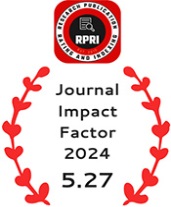Introductory Guide to the Common European Framework of Reference (CEFR) for English Language Teachers
DOI:
https://doi.org/10.55544/ijrah.2.6.40Keywords:
Language Learning, Teaching, Assessment, CEFRAbstract
The Common European Framework of Reference for Languages: Learning, Teaching, Assessment, abbreviated in English as CEFR or CEF or CEFRL, is a guideline used to describe achievements of learners of foreign languages across Europe and, increasingly, in other countries. The CEFR is also intended to make it easier for educational institutions and employers to evaluate the language qualifications of candidates for education admission or employment. Its main aim is to provide a method of learning, teaching, and assessing that applies to all languages in Europe.
The Common European Framework of Reference (CEFR) guidelines describe language proficiency of learners on a scale of 6 levels. While the description of CEFR guidelines is generic across languages, the development of automated proficiency classification systems for different languages follows different approaches.
Downloads
References
University of Cambridge ESOL Examination: Using the CEFR Principal of Good Practice: Oct 2011
Cambridge University Press: Guide to CEFR.
Aligning Language Education with the CEFR Hand Book – April 2022
Downloads
Published
How to Cite
Issue
Section
License
Copyright (c) 2022 Martik Prajapati

This work is licensed under a Creative Commons Attribution-NonCommercial-NoDerivatives 4.0 International License.




















